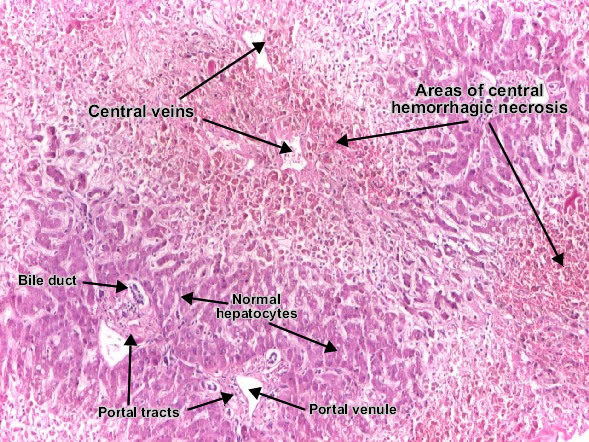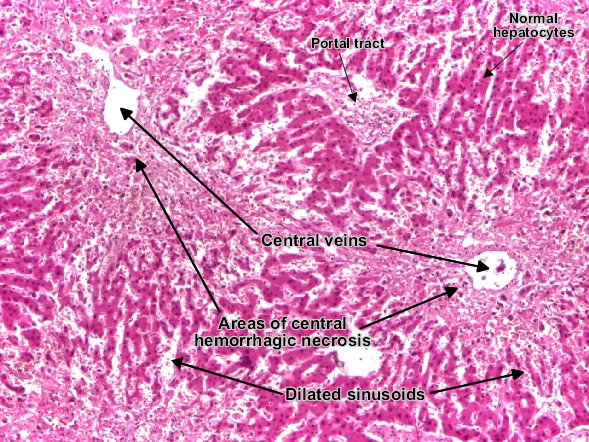Passive congestion (Passive hyperemia) (liver)
Hyperemia (congestion) represents the increase of blood in a territory, due to dilatation of small vessels. According to the mechanism, it may be active or passive.
Active hyperemia (congestion) is a result of arteriolar distension (e.g., skeletal muscle activity, inflammation, local neuro-vegetative reaction).
Passive hyperemia (congestion), also termed stasis, is a consequence of an impaired venous drainage (heart failure, compression or obstruction of veins), followed by dilatation of venules and capillaries.

Passive congestion of the liver. Central veins, spaces of Disse and central vascular sinusoids are dilated, compressing the hepatocytes which are atrophied and, with progression, will necrotize - central hemorrhagic necrosis (compression and/or ischemic mechanism). Mediolobular hepatocytes may present fatty change (hypoxic mechanism); periportal hepatocytes are normal. (H&E, ob. x4)
Passive congestion (Passive hyperemia) (liver) (detail)

Passive congestion of the liver. (H&E, ob. x10)

